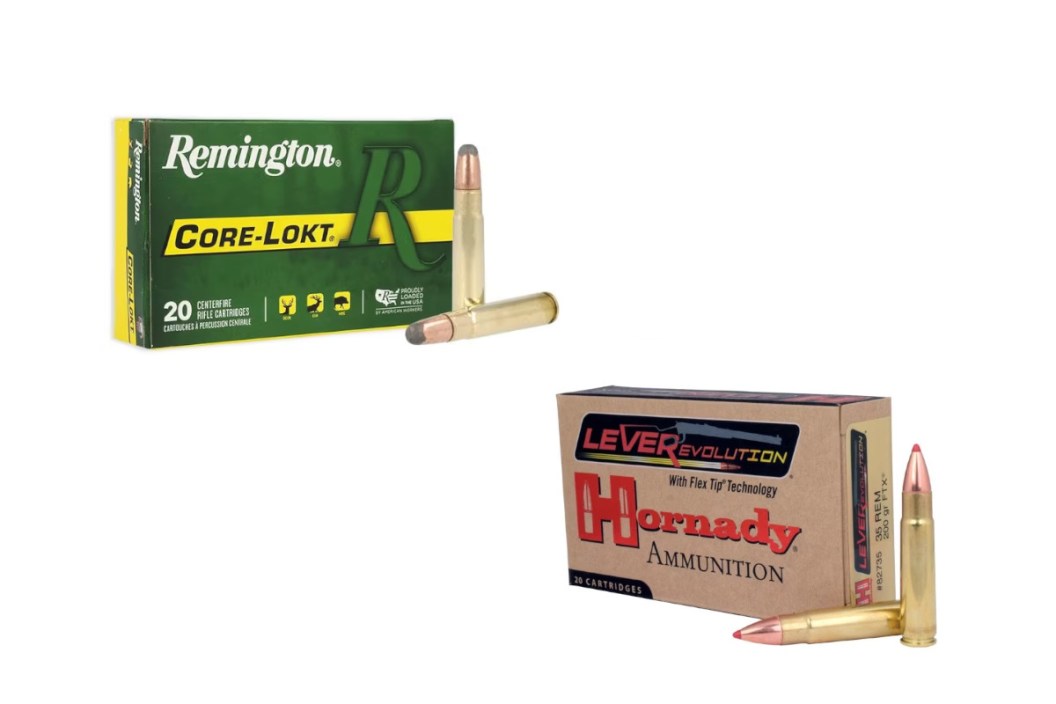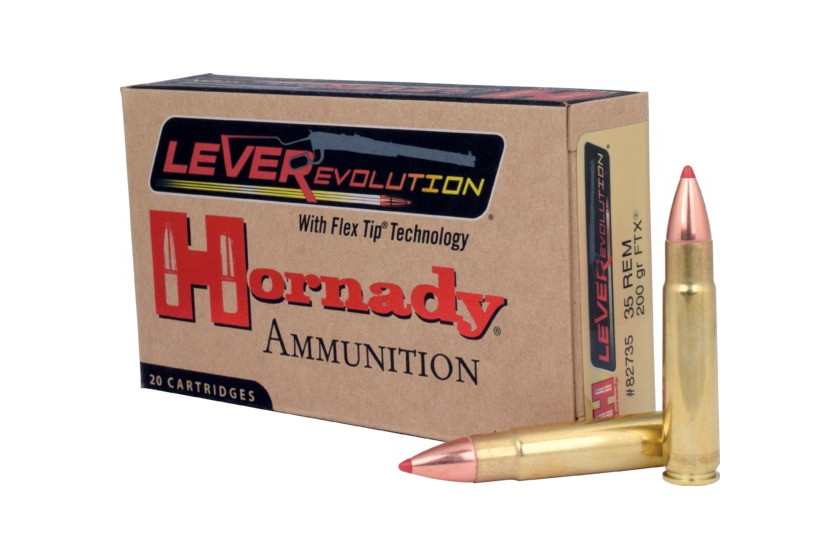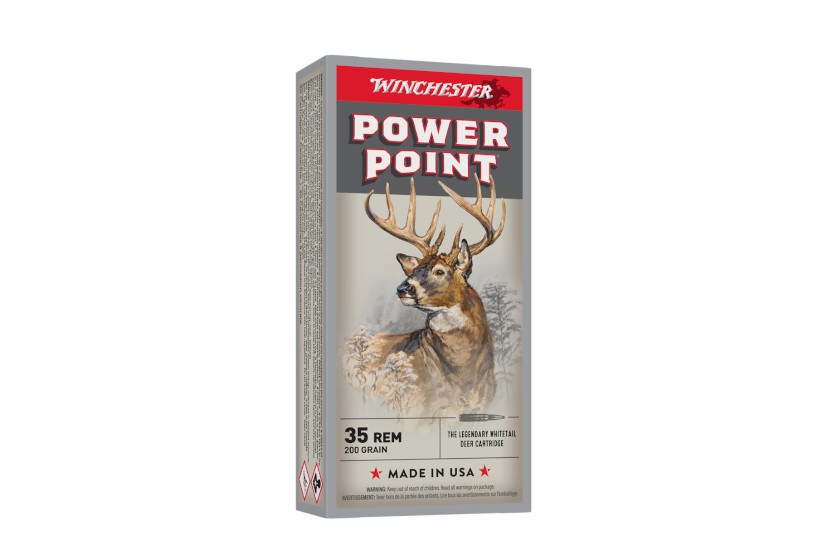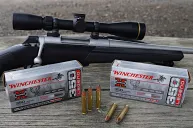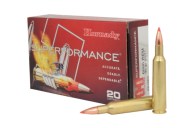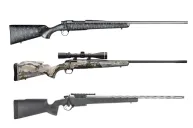First introduced all the way back in 1906, the classic .35 Remington has helped many a hunter put food on their family's table over the decades since then. The rimless, bottlenecked cartridge is a proven-again deer killer that can also bring down black bears and even elk in a pinch. The cartridge rose to prominence being chambered in classic lever-action rifles such as the Marlin Model 336 or Henry Side Gate.
The .35 Remington is a very old round, but it's still hanging on—even if there's a ton of other cartridges that now seem to get all the attention of the manufacturers. But we've heard the cries from the beloved fans of the .35 Remington, and that's why we decided to do a more in-depth look at this beloved round and the current factory ammo offerings that are still on the market.
Ballistics and Specs of the .35 Remington
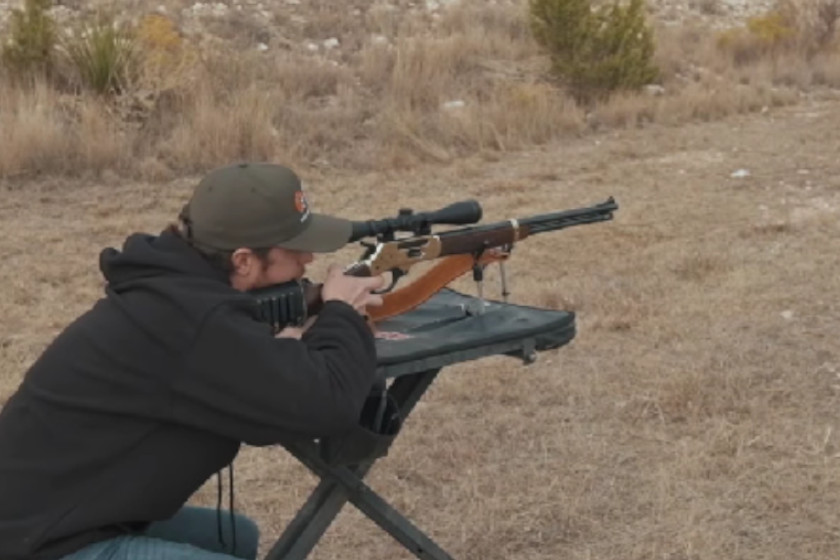
YouTube: Henry Repeating Arms
Obviously, being such an old centerfire cartridge, the design of the .35 Remington is rather simple and to the point. It has a .358-inch bullet diameter and a 1.920-inch case length. It's a little long for some states that have area limits on case length, but it's legal in many parts of the country. It's most effective inside of 100 yards, which is probably the biggest reason it's more popular in the Southern and Eastern parts of the U.S. Hunters in these areas are often in areas of thicker cover where shot distances are more limited than the open plains of the West.
In any case, the most popular factory rounds use heavy 180- or 200-grain bullets. We'll get more into the ballistics with our ammo choices, but it's not uncommon to get a muzzle velocity of 2,050 fps from the .35 Remington, even though most of the rounds are of a simple round-nose soft-point design. Most rounds are delivering just under 2,000 foot-pounds of muzzle energy, too. At 100 yards, they're usually still doing around 1,200 fps and hitting with around 1,600 foot-pounds of energy. That's some solid, knock-down energy for whitetails and similar-sized game. It has a lot more power at a distance than the classic .30-30 Winchester.
Speaking of the .30-30 Winchester, the .35 Remington's extra power does come with slightly more recoil. If you start diving into the recoil energy, you'll find that the .35 Remington is usually a couple of pounds heavier in kick depending on the bullet size. For some shooters, the difference is almost negligible depending on the size of the bullet and the type of ammo. We've heard from plenty of hunters who say they don't notice. A good recoil pad helps soak it up and makes the .35 Remington quite comparable to the .30-30.
Really, the biggest difference between the .35 Remington and the .30-30 is the speed factor. The smaller .30-30 is going to get at least 200-300 fps more speed than the .35 Rem. However, the .35 is always going to have more knockdown power than the .30-30. We like the .35 for hunters who don't like long tracking jobs, or those on smaller properties who want their deer to go down sooner before it crosses a property line.
Is the .35 Remington Obsolete?
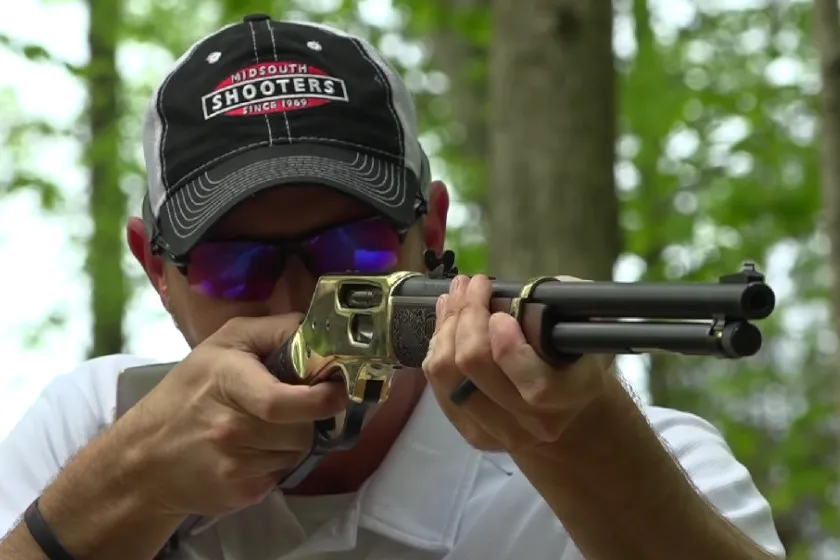
YouTube: Henry Repeating Arms
You're easily forgiven for thinking the .35 Remington has become a forgotten cartridge—at least, by the firearms manufacturers. Famous guns such as the semi-automatic Remington Model 8 and the pump-action Remington 141 Gamemaster were produced in relatively small numbers and gained most of their popularity on secondary markets years later. Many manufacturers have slowed or ceased production on new .35 Remington rifles completely despite us noticing hunters clamoring for more on the social media channels of nearly every major manufacturer. It seems that the .35 Remington is one of the great underappreciated hunting cartridges of our time.
This fact shows in the factory rifle ammo options available on the market these days. Most manufacturers seem to only produce .35 Remington rifle ammunition in small runs, and the prices per box seem to reflect that: $45 to $50 a box seems to be rather close to the standard these days. It's little wonder so many dedicated .35 Remington fans have turned to reloading, sometimes out of pure necessity if their local sporting goods retailer isn't consistently getting the factory rounds in stock.
That said, we know that not all of us have the time for handloading, and it might not be a feasible investment if you're only using them for hunting anyway. So, let us run down some of the best .35 Remington ammo options on the market right now.
The Best Ballistics Performance
Hornady Leverevolution
Pros:
- Some of the best muzzle velocities on the market
- Zero drop at 200 yards
- Affordable
Cons:
- Difficult to find
Built specifically for lever-action platforms, the Hornady Leverevolution is loaded with 200-grain FTX bullets. These bullets feature a lead core that helps them expand nicely upon impact. Additionally, the bullets have polymer flex tips that are specifically built to rest on top of one another in tubular magazines without worry about a pointed tip on the primer of another cartridge. The other plus side to this design is it results in 2,225 fps of muzzle velocity. These cartridges are still doing 1,963 fps at 100 yards and hitting with 1,700 foot-pounds of energy. While most .35 Remington fans like to keep their shots in a 100-to-150-yard window, Hornady ammo puts the zero for these rounds at 200 yards. At that distance, these rounds are still doing 1,721 fps and hitting with 1,315 foot-pounds of energy. This was also the cheapest .35 Remington ammo we found online, going for around $42 a box. The only real downside here is that it can be harder to find on your local store shelves. These days, ordering from the internet is almost a necessity.
The Best Power Option

Midway USA
Buffalo Bore Flat Nose
Pros:
- Maximizes the knockdown power of the .35 Remington
- Extremely reliable
Cons:
- Price
The Buffalo Bore name is quite legendary these days for reliability and knockdown power. If you're planning to use the .35 Rem for big game such as bear or elk, this is your best option. Buffalo Bore puts the velocity of these 220-grain rounds at 2,140 fps at 100 yards and 2,236 foot-pounds of energy. They're impressive numbers for a rather simple, flat-nose design. Buffalo Bore puts the drop at zero for 100 yards and -2.37 at 150. Most deer and other game that are hit with these rounds drop on the spot. Those that do manage to go anywhere usually don't go much farther. Even if they do run, that flat nose just helps enhance the already deep wound channels the .35 Remington usually creates. These rounds will make a large exit hole with an easy blood trail that will help you recover your game quickly. The downside to these rounds is we found them going for upward of $93 a box. These are probably best saved for those special hunting trips where you don't want to leave anything to chance.
Classic Reliability
Remington Core-Lokt
Pros:
- Reliable
- Excellent expansion
- Availability
Cons:
- Less energy than other factory options
It's hard to argue with the results delivered by a classic. It can easily be argued that Remington Core-Lokt has killed more whitetails than any other .35 Remington factory cartridge. The bullets of these rounds feature a lead core and a copper jacket that expands quite nicely upon impact. They create excellent wound channels that are going to help you recover game quickly and easily. The muzzle velocity of these rounds is around 2,080 fps. The rounds are still doing nearly 1,700 fps at 100 yards. The downside here is these rounds retain a little less energy at that distance. You're looking at around 1,280 foot-pounds at 100 yards. This is probably the most available .35 Remington ammo on the market. It's what I've seen most often on store shelves here in the Midwest. It goes for about $56 a box. Expensive, but it's a solid option for anyone who just wants availability.
Our Top Pick for a Deer Round
Winchester Power Point
Pros:
- Excellent knockdown power
- Good trajectory to 150 yards
Cons:
- Blood trails can sometimes be spotty
- Slightly slower from the muzzle than other options
Winchester's Power Point ammo has quickly become one of our favorites for deer hunting. It just has excellent knockdown power. These .35 Remington 200-grain rounds are doing 2,020 fps at the muzzle and 1,646 fps at 100 yards. As far as muzzle energy goes, you're looking at a little over 1,800 foot-pounds at the muzzle and just over 1,200 foot-pounds at 100 yards. Winchester has the zero at 100 yards, but there's only -3.8 inches of drop at 150 yards. The Power Points feature a copper jacket and alloyed lead core with a soft lead point. These transfer a nice amount of energy to the target. A downside is that depending on where you hit the animal, the blood trails can sometimes be a little spotty. They seem to create a lot of internal bleeding, though, and most deer hit with these don't go very far. These usually go for around $50 a box.
For Those Who Love Simplicity
Federal Power-Shok
Pros:
- Simple
- Reliable
Cons:
- We wish there was a variant in their copper line
Bullet technology has been advancing rapidly these past few years and, while we love the innovations, there's something to be said for those who just want a simple lead core design that'll expand quickly and bring down game humanely. These are jacked soft points. Federal Premium puts the muzzle velocity of these 200-grain rounds at 2,080 fps. It's still doing around 1,680 fps at 100 yards. The energy is right around 1,270 foot-pounds at that distance. We really like these rounds for anyone hunting brush dense areas where shots are limited. The Power-Shoks are a proven design that puts meat in the freezer on a consistent basis. These are usually readily available. Right now, they go for around $55 a box. We wish Federal Premium would offer an option in their Trophy Copper line for use on public lands with restrictions in place.
For more outdoor content from Travis Smola, be sure to follow him on Twitter and Instagram. For original videos, check out his Geocaching and Outdoors with Travis YouTube channels.
